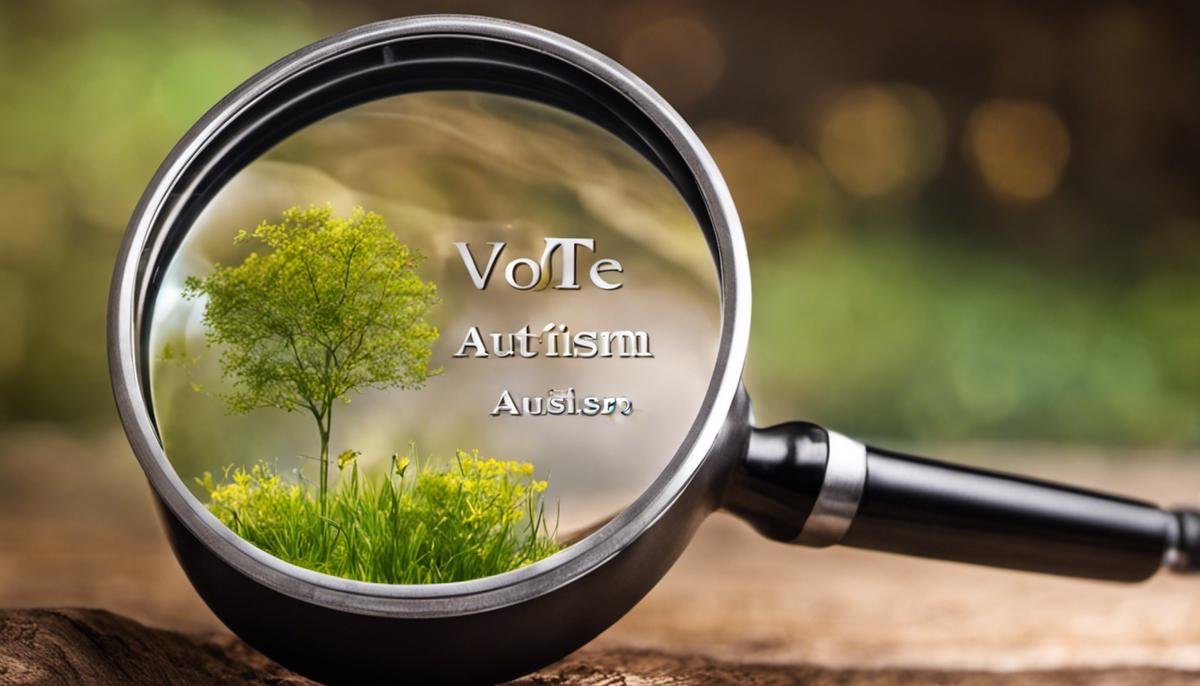
Autism Spectrum Disorder (ASD) is an extensive and complex topic, encompassing a broad array of symptoms and degrees of severity. ASD affects numerous aspects of a child’s behavior, development, social interactions, and communication abilities. As such, it is essential for parents and caregivers to have a comprehensive understanding of the disorder. This knowledge allows for early detection and intervention, improving the child’s life quality and developmental outcomes. This discussion will delve into the complexities of autism, its genetic factors, possible prenatal screening methods, and the importance of informed decision-making for parents.
Understanding Autism
Understanding Autism: Its Manifestations in Children
Autism, often referred to as Autism Spectrum Disorder (ASD), is a multifaceted neurological condition that has a profound effect on a child’s social interaction, speech, behaviors, and cognitive function. It’s called a “spectrum” disorder because the symptoms and degree of impairment can differ greatly from one child to another. For many parents, recognizing the early signs of autism can be a daunting task. Should that be the case, remember this: You’re not alone! This article aims to provide a basic understanding of autism and how it manifests in children.
Autism typically becomes apparent within the first 2-3 years of a child’s life. It is characterized by a spectrum of behavioral issues ranging from mild social awkwardness to severe cognitive impairments. Though the causes of autism remain largely unknown, studies point to a combination of genetic and environmental factors.
Now, let’s unveil some common signs and symptoms of autism in children. Early recognition is key, so it’s essential to stay informed and vigilant.
- Social Interaction Challenges: Children with autism might struggle with social cues and interactions that seem second nature to others. This could manifest as a lack of eye contact, difficulty understanding feelings (their own and others’), or struggles with the back-and-forth nature of conversations.
- Repetitive Behaviors: Repetitive movements or unusual behaviors like hand flapping, spinning, or rocking can be early indicators of autism. These are often linked to the child’s need for routine or resistance to change in their environment.
- Language and Communication Problems: Delayed language development or nonverbal communication often occurs in children with autism. They might repeat phrases verbatim, have a monotonous speech tone, or communicate through gestures instead of words.
- Sensory Sensitivities: Frequently, children with autism display unusual responses to sensory stimuli. This might include exaggerated responses to certain textures, smells, sounds, or lights, or need for high levels of stimulation.
It’s essential to remember, however, that every child is unique. A presence of one or even a few of these signs doesn’t necessarily indicate autism. For any concerns, always reach out to a healthcare professional – their expertise will guide you with what next steps to take, if any.
Above all, celebrate your child’s uniqueness and remember that a diagnosis doesn’t define them. With early intervention and support, children with autism can thrive and lead fulfilling lives. It’s okay to have a lot of questions, and it’s okay to feel overwhelmed. In the end, all this journey asks of you as a parent is understanding, patience, and love – and you’ve already got plenty of that to give!

Genetic Factors of Autism
The Influence of Genetics in Autism: Unraveling the Connection
Autism, as has been previously introduced, is an exceptional condition that manifests in a variety of forms and degrees, making it necessary to comprehend and manage from an individualized viewpoint. While potential sources of autism are plenty, one often misunderstood and constantly explored in research is the role of genetics in autism. Exciting advances in the scientific community indicate that genetics play a significant role, bearing an important impact on how we perceive this condition’s inception and progression.
When we explore the correlations between autism and genetics, we are delving into the intricate world of DNA, parents’ hereditary information passed to their offspring. For instance, studies reveal that sibling recurrence, that is, the likelihood of more than one child in a family having autism, ranges from two to 18%. This provides evidence of the genetic involvement in autism, showing that it can, indeed, run in families.
For a long time, the research community has been investigating specific genes associated with autism. To date, several hundred genes have been identified that could potentially confer a risk for developing this condition. Some are important in brain growth and function, while others play a crucial role in the way neurons communicate. These findings promote an understanding that autism is not a result of a single gene but constitutes a complex overlapping of many genes.
Meanwhile, both syndromic and non-syndromic forms of autism exist. Syndromic autism often occurs as part of a larger genetic disorder, such as Fragile X Syndrome or Tuberous Sclerosis, where clear genetic causes are established. The non-syndromic form, which constitutes most autism cases, has a less obvious genetic basis, suggesting interaction between multiple genes and possible environmental factors.
Moreover, it is also vital to recognize the role of de novo mutations – genetic alterations that spontaneously occur in the child’s DNA rather than being inherited from the parents. These mutations, especially when present in genes related to brain function, are significantly associated with autism, adding an additional layer to the genetic complexity of this condition.
While genetics plays a considerable role in autism, it’s important to reiterate that it’s not the sole determinant. Although carrying associated genetic variants increases the risk, it doesn’t always lead to autism development. Clear-cuttedly, genetics and environment intricately weave themselves together, potentially triggering this condition.
Therefore, the question of genetics in autism isn’t about casting blame—no parents should falsely accuse themselves for their child’s diagnosis. Instead, it’s about gaining knowledge and perspective. Parenting is a journey, filled with challenges and joys, especially when nurturing a child with autism. Embracing our children’s unique qualities entails acquiring a better understanding of the shades of differences we see in them, including those drawn by the unseen hand of genetics.
In conclusion, while the puzzle of autism is not fully solved, each unique genetic contribution identified offers an opportunity to better understand this spectrum. As we continue swimming in these depths of discovery, it’s important for us, as a community, to focus on providing a wholesome, supportive, and nurturing environment for all children, despite their genetic codes.

Testing for Autism During Pregnancy
The Potential for Pre-Natal Testing in Autism: An Exploration
As parents, we’re programmed to worry about our children, even when they’re still cozy in the womb. It’s important to remember, though, that pregnancy is also a time for hope and anticipation. A common question that comes up particularly for parents with a history of Autism in the family is whether it is possible to conduct preventive screening to uncover Autism prenatally. Let’s demystify this query together.
At present, there are no prenatal tests that can definitively determine Autism. This Neil Armstrong-esque leap in modern medicine is yet to happen. However, certain genetic tests performed during pregnancy, like Amniocentesis and Chorionic Villus Sampling (CVS), can provide an overview of your unborn child’s genetic profile, assisting physicians in flagging potential risks for numerous disorders, including but not limited to Autism. However, bear in mind, these tests generally focus on detecting chromosomal abnormalities and are not explicitly aimed at identifying Autism.
Interestingly, science has shown that Autism doesn’t occur randomly. Genetics play a significant role, but it’s not the only contributor. In fact, Autism is thought to result from a combination of affected genes and certain environmental factors. But the complexity of this interplay isn’t fully understood yet, making comprehensive prenatal testing currently out of reach.
Many of us, as nurturing parents, might feel a sense of frustration about the uncertainty that comes with Autism. Shouldn’t science have found a way by now? What can be done? Remember, the medical community is continually researching, and enormous strides in understanding Autism have already been made.
In the meantime, the best action we can take is to be supportive and consult with professionals who can guide us. Pediatricians, genetics specialists, therapists, and other professionals stand ready to offer their expertise. Often, early behavioral interventions can help manage Autism symptoms effectively, empowering affected children to navigate life successfully.
By remaining proactive and well-informed, we are able to provide the best care and environments for our children to thrive, irrespective of their neurological makeup. Let’s remember to focus on the journey of parenting, on celebrating our children’s individual strengths, and sharing in their unique view of the world. A diagnosis of Autism isn’t the end of the world; it’s just the beginning of a different one.
As each family’s experience is unique and personal, fostering a supportive, accepting, and understanding community becomes vital for every family navigating the beautiful labyrinth of Autism. In this way, every one of us – parents, children, and the community at large – learns and grows, ensuring that our collective journey through Autism is not one of isolation, but a shared testament to resilience, love, and the continual pursuit of understanding.

Decision Making and Informed Consent
Now that we have a clearer understanding of autism, its manifestations, the genetic and environmental factors involved, and the importance of community support, let’s delve into how we can make informed decisions based on potential test results. After all, navigating the world of parenting a child with autism can often feel like you’re steering through uncharted waters. However, there are ways to make sense of what may initially seem overwhelming at first glance.
Upon receiving a potential autism diagnosis, it’s essential to remember that while initial feelings of confusion and unease are valid and common among parents, they’re not the final stop. Instead, let’s consider them as your first stepping stone to empowering yourself with knowledge and insight.
Autism diagnosis is primarily based on behavior. Once you as a parent notice potential signs of autism and reach out for consultation, the process involves multiple behavioral assessments of your child. Amidst these tests, remember a common adage passed down through the ages of parenting wisdom: Knowledge is power.
Here’s where education plays a critical role. The more you understand these assessments and their interpretation, the better you can take control of the situation. A valuable resource worth considering is to reach out to early intervention services or educational programs for children with autism. They are usually staffed with multi-disciplinary teams who can help you interpret test results, providing you with practical strategies and coping mechanisms.
Next, don’t forget the importance of harnessing the power of your pediatrician’s expertise and guidance in translating results. They can provide you with a comprehensive understanding of what particular scores or markers mean and how they may influence your child’s development.
But what happens when test results are inconclusive or when they indicate a risk but not a certainty? We’re all human, and our inclination is to want certainty, especially when related to our children’s health and welfare. In these situations, it’s vital to remember, it doesn’t diminish the unique light your child brings to your family and the world.
In fact, such findings can be an opportunity to prepare and plan. Early behavioral interventions are critical for managing autism symptoms. Recognizing potential risks earlier grants us the chance to line up supportive therapies and resources sooner, providing your child with the help they need to shine their brightest light sooner.
Lasty, as a pillar of strength and understanding, remember you are not alone. Many families are navigating the same waters. Attending support groups or autism-focused online communities provides a space to share experiences, advice, and above all, compassion. You’ll find strength in community.
Deciphering potential test results can be a journey fraught with uncertainty and emotional upheavals, but it’s a journey that ultimately leads towards empowerment, understanding, and growth. As parents, our ultimate goal is to help our children to be their best selves. In the face of autism, armed with the power of knowledge, the dedication of love, and the strength of community, we stand unwavering in our determination to make that goal a reality. Because remember, no matter what the tests reveal, they do not define your child. Your child defines themselves in their uniqueness, their strengths, their perspectives, and the unrestrained joy they bring into your life.

The desire for early detection and intervention in autism is a common thread among parents, highlighting the importance of understanding its genetic factors and potential prenatal tests. However, as with all medical procedures, it’s crucial to have an accurate understanding and realistic expectations about these tests. They can provide valuable information but are not definitive proof of a child’s future development. Informed decision-making is, therefore, paramount. It involves far more than just medical advisement; it is a holistic process considering family history, expectations, hopes, fears, and personal values. Being well-informed smoothens this process, enabling parents to make decisions that feel appropriate for their family.




